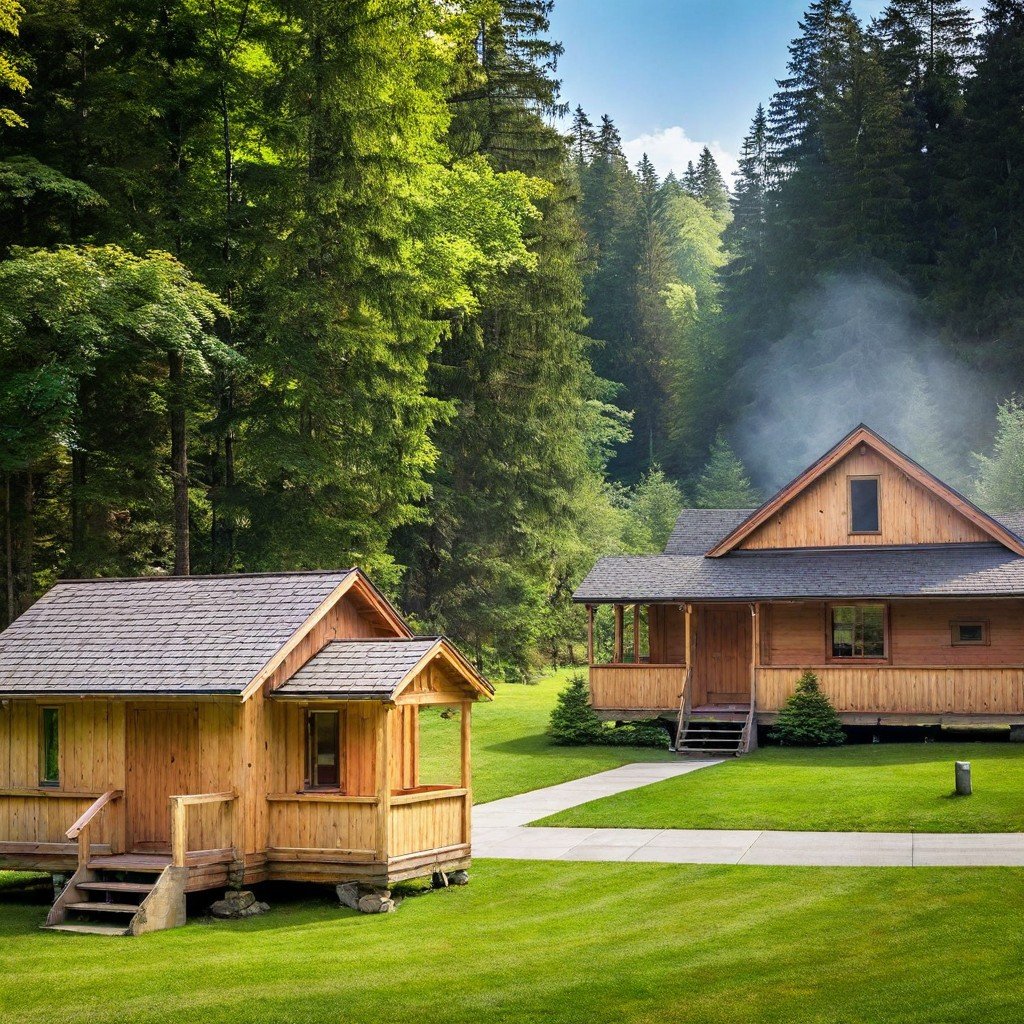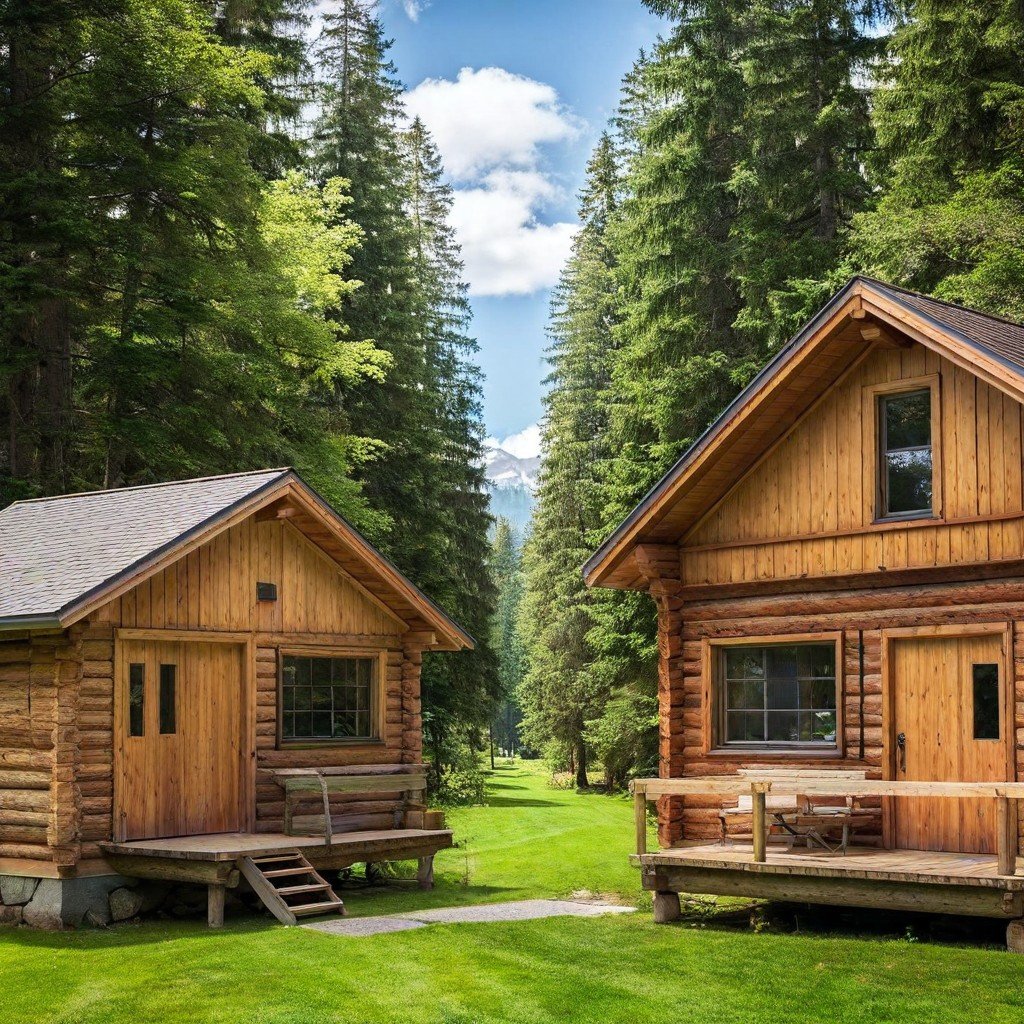Most people don’t realize the key differences between stick-built and modular cabins that affect their budget and construction timeline. Your contractor might not explain all the essential choices you’ll face when building a new cabin. Architect-stamped blueprints for a stick-built home will cost you at least $3,500 before getting a quote. Prefab vs stick-built pricing tends to be clearer because modular builders use standardized plans.
The cost comparison between modular and stick-built homes goes beyond the original price tag. Stick-built projects usually take several months to over a year to complete, but modular projects wrap up in just weeks to a few months. The construction quality is different, too – modular buildings often score higher energy efficiency ratings because of their precise factory fabrication. In this piece, we’ll reveal what builders don’t tell you about both options to help you make the right choice for your 2025 cabin project.
Upfront Costs: What You Pay Before Building
You need a big upfront investment to build a cabin before construction even starts. Most people think about construction costs, but the pre-building expenses add up faster than you might expect.
Architectural plans and design fees
Architectural design services are your first major expense. You’ll pay between 10 and 20% of your construction cost for new cabins and 15-20% for renovations. Custom cabins with detailed design work usually cost 15-20%. Simple design services might run 8-12% of the construction cost.
Stick-built projects need architect-stamped blueprints that cost at least $3,500 before getting a quote. Modular builders use standardized plans, which makes their pricing more predictable.
Permits, land prep, and site evaluation
Your cabin project needs proper permitting, whatever type of construction you choose. A building permit costs $500 on average, but prices range from $140-$3,000 based on location and scope. These fees usually make up 0.5-2% of total construction costs.
Site evaluation applications must be filed before any building or land development starts. Land preparation costs can shock many people—clearing, leveling, removing trees, soil tests, and erosion controls might cost $10,000-$100,000+.
Prefab vs stick-built: pricing transparency
Pricing transparency marks a key difference between stick-built and modular costs. Prefab cabins give you more budget-friendly and clear upfront pricing. Factory production cuts labor costs and material waste, so prices stay more stable.
Stick-built projects involve more variables. Site problems or changes during construction can mean this is a big deal as it means that the final price will increase. Hidden costs pop up throughout stick-built projects, while modular home pricing stays more straightforward.
Modular homes might seem cheaper, but be careful. Many factory-built cabin companies leave out sales tax, upgrades, shipping, craning, foundation work, and utility connections from their quotes. These can add $30,000-$50,000 to your total.
Construction Costs: What Builders Don’t Always Disclose

Real differences in cabin-building methods become clear during construction. The true cost gap shows up once the actual work begins.
Stick-built vs modular cost variability
Stick-built cabins cost between $150-$250 per square foot. These costs can go up a lot based on location, materials, and design complexity. Modular cabins cost $100-$200 per square foot after adding up all expenses. Local factors drive these price differences. Labor costs vary widely by region. Rural areas often charge premium prices due to the lack of contractors.
Stick-built projects leave you exposed to market changes. Material prices can jump without warning. We saw this happen when lumber prices shot up 250% during recent supply chain issues. On top of that, modular construction lets you lock in most material costs when you sign the contract.
Hidden fees in stick-built projects
Traditional builders often skip mentioning some unavoidable costs upfront. Changes to the original plan add 10-15% to your final bill. The typical stick-built quotes don’t include utility hookups, which run $5,000-$20,000 on average.
Here are other costs builders might not mention:
- Temporary power setups ($1,000-$2,000)
- Waste management fees ($500-$1,000 per dumpster)
- Weather delays that drive up labor costs
- Final cleaning charges ($500-$2,000)
Modular home cost vs stick-built: what’s included
Modular home packages look complete at first glance, but often leave out vital components. The quoted price covers just the manufactured structure. It doesn’t include moving it, setting it up, or preparing the site. The “set” fee for crane rental and assembly adds $10,000-$30,000, depending on complexity.
A modular cabin priced at $100,000 ended up costing $150,000-$200,000 after adding foundation work, utility connections, and finishing touches. In spite of that, modular homes include more standard features in their base price than stick-built ones. These features include cabinetry, appliances, and flooring – items that might cost extra in traditional construction.
Customization and Control: How Much Say Do You Really Have?
Design dreams don’t always match building realities during cabin planning. Your hopes about customization options might look very different from what you can actually do based on your chosen construction method.
Stick-built: full design freedom
Stick-built homes shine because they give you almost unlimited design flexibility. You get complete control over every detail of your cabin design, from architectural styles to unique layouts. Stick-built construction lets you:
- Easily adjust walls or add rooms during the design phase
- Add special features like custom libraries, vaulted ceilings, or wine cellars – your budget is the only limit
- Make changes during construction, though this might cost more time and money
This freedom to customize makes stick-built the top choice for people who want their exact vision brought to life.
Modular: limited but growing options
Modern modular homes have come a long way from their cookie-cutter reputation. Today’s manufacturers offer more design variety, though they can’t match stick-built homes’ flexibility:
- You can pick from various layouts, finishes, and upgrades
- Modern modular companies build everything from sleek contemporary designs to traditional styles
- You can customize at every step – from floor plans to finishes and add-ons
In spite of that, modular homes have some built-in limits. Their box-like setup works well for bedrooms but struggles with open, light-filled spaces that many buyers want. Big structural changes become tough and expensive once factory production starts.
Effect of customization on final cost
Customization affects your final price tag a lot for both methods. Small upgrades in a few areas can add up more than you might expect if not planned early. To cite an instance:
- Custom cabinets, complex tile patterns, designer fixtures, and upgraded appliances can push costs up fast
- Two homes with similar layouts might differ in price by tens of thousands just because of finish choices
- Mixed approaches that combine modular with stick-built elements can streamline processes and design potential
We found that people wanting maximum design freedom should be ready for stick-built construction’s higher costs. Accepting some design limits with modular construction usually saves money and speeds up completion.
Timeline and Resale: What Happens After the Build

Building a cabin costs money and time. Smart buyers need to understand the timeline differences and long-term value between prefab and stick-built options. This knowledge is vital to making informed decisions.
Construction speed: modular vs stick-built
A modular cabin becomes move-in ready in just 3-4 months, while traditional construction takes nearly 11 months. Factory production happens at the same time as site preparation, which makes modular construction 30-50% faster than stick-built methods. Factory workers assemble most modular homes within 7 days. The on-site finishing needs only 45-60 more days.
Weather delays and labor shortages
Bad weather holds up 45% of all construction projects worldwide. Stick-built cabins face these interruptions more often. Modular construction happens in climate-controlled facilities that protect against these issues. The construction industry’s skilled labor shortage creates an economic effect of $10.81 billion annually from longer timelines. Small builders feel these delays the most. Their project cycles now take 9-12 months instead of the pre-pandemic 4-6 months.
Resale value myths and market perception
In stark comparison to this common belief, modular homes grow in value, as with traditional stick-built properties. Federal Housing Finance Agency data shows that well-placed manufactured homes can match conventional construction’s appreciation. The negative perception of prefabricated homes continues to fade as buyers see their quality and efficiency benefits.
Conclusion
Your priorities, budget, and timeline expectations will shape your choice between stick-built and modular cabins. Our comparison reveals major differences that most builders don’t tell you about. Stick-built cabins let you customize freely, and that’s unmatched, but they cost more upfront, take longer to build, and face more weather delays and worker shortages. Modular cabins, on the other hand, get done faster, have more predictable prices, and hold their value just as well despite some design limits.
Money plays a big part in your decision. Stick-built projects usually cost $150-$250 per square foot, while modular options run from $100-$200 per square foot with all costs included. But keep in mind that those attractive modular quotes often leave out vital extras like moving, setup, and site work – these can add $50,000 or more to your final cost.
Time is a vital factor too. You can move into a modular cabin in 3-4 months. Stick-built projects take 11 months or longer, especially now with worker shortages in construction. This becomes a big deal if you need your cabin ready by a specific date.
Here’s the good part – both methods can give you beautiful, strong, and energy-efficient cabins when done right. People don’t look down on modular homes anymore, as buyers see their quality benefits and how well they hold value.
We suggest you talk to several builders of each type, look at finished projects, and chat with current owners before you decide. Their real-life stories are a great way to get insights beyond what you’ll see in brochures. Whatever method you pick, knowing these hidden details will help you tackle your 2025 cabin project with confidence and clear expectations.

